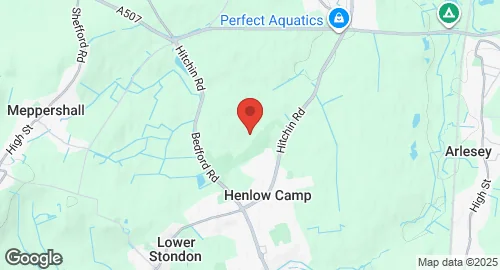RAF Henlow
Summary
| Operating Country | 🇬🇧 United Kingdom |
| Location | 🇬🇧 United Kingdom |
| Status | ◉ Planned for closing in 2026 |
| Usage | Military only |
| Year built | 1918 |
| Operating Organization | Royal Air Force |
| Units |
|
Description
RAF Henlow is a Royal Air Force support station located in Bedfordshire, England. The site was chosen as a military aircraft repair depot in 1917 and became officially operational on May 18, 1918. It served as the first parachute testing centre for the RAF in May 1920 and later hosted the Officers Engineering School. During the inter-war years, it was home to several aircraft squadrons, and Sir Frank Whittle was a student and later in charge of aero engine testing there. In the Second World War, RAF Henlow was used to assemble Hawker Hurricanes manufactured in Canada and served as a repair base under No. 13 Maintenance Unit. The base was also a major RAF technical training college from 1947 until its amalgamation with RAF College Cranwell in 1965. The RAF Officer Cadet Training Unit was subsequently based there until 1980, followed by the RAF Signals Engineering Establishment and the Radio Engineering Unit. In December 2011, RAF Henlow was identified as one of several Ministry of Defence sites with radium contamination from Second World War aircraft dials. Administratively, it was part of RAF Brampton Wyton Henlow until 2013. Flying activity at RAF Henlow ceased in July 2020. Currently, it houses the RAF Centre of Aerospace Medicine, the Joint Arms Control Implementation Group (JACIG), and various other support units including the Air Security Force and the Directorate of Overseas Bases. The Ministry of Defence announced in 2016 that the base is set for closure, with disposal expected to take place from 2026.
